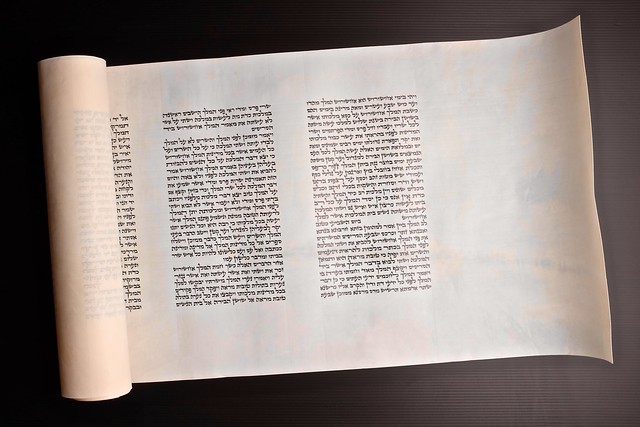Megilas Ester
The previous posts addressed the relationship between the Keter Aram Tzova (also known as the Tikun Ben Asher) and modern-day Sifrei Torah & nevi’im.1 This post will address the masora of the Keter as it relates to megilas Ester.
Unlike the rest of Nach, all Jewish communities throughout history have written megilas Ester on scrolls of parchment. As was the case with Sifrei Torah, minor variations developed in the text and layout over time. Rabbi Shlomo Ganzfried attempted to standardize the megila by compiling a detailed list in the Keses Hasofer reconciling the different versions.2
Although the section of the Keter that contains megilas Ester is missing, there is copious evidence – both internal and external3 – that can be used to reconstruct the missing text with a high degree of certainty. This reconstructed text differs in several ways from the list in the Keses Hasofer:
Parshi’os: One area of difference is the number of parsha breaks and their locations in the text. There is also a difference in the type of parshi’os: While the Tikun Ben Asher has some parshi’os that are setumos and some that are pesuchos, the Keses Hasofer ruled that all of the parshi’os in megilas Ester should be setumos.4
Spelling: There are also a handful of words with spelling differences. Most are minor variations of maleh or chaser spelling, and are not discernible when listening to the megila reading. There are two verses with differences that do affect the way the words are read, although they do not change the underlying meaning of the text:
- In 8:11, the Tikun Ben Asher has להשמיד ולהרוג ולאבד, and the Keses Hasofer has להשמיד להרוג ולאבד.
- In 9:2, the Tikun Ben Asher has ואיש לא עמד לפניהם, and the Keses Hasofer has ואיש לא עמד בפניהם.
With regard to these two verses, the Keses Hasofer noted that there was strong evidence to support the version of the text that appears in the Tikun Ben Asher. Since he also found evidence to support an alternate version of the text, he considered the “correct” text a matter of uncertainty. In light of the uncertainty, he ruled in accordance with the common practice in Ashkenaz at that time, which did not follow the masora of the Keter.

Masora vs. Masora
For the most part, Ashkenazim follow the Keses Hasofer for both spelling and parshi’os, although there are contemporary Ashkenazi halachic authorities who advocate following the Tikun Ben Asher. Most Sefardim follow the Keses Hasofer for Parshi’os, but the Tikun Ben Asher for spelling.5 Yemenites generally follow the Tikun Ben Asher for both parshi’os and spelling.
Unfortunately, the average buyer is unaware of the subtle differences between the various traditions. When considering the purchase of a megilas Ester, it would be prudent to consult with a knowledgeable halachic authority to determine the most appropriate masora for you.
With thanks to Yakov Schonberg for graciously sharing his expertise.
-= 8 =-
-
Included in the discussion of nevi’im are the four megilos (Rus, Shir Hashirim, Koheles, and Eicha) that were not historically written on klaf. ↩
-
Rabbi Ganzfried did not have access to the Keter, but he did have access to other authoritative copies of the megila, as well as the Minchas Shai and other relevant works. ↩
-
Internal evidence comes from the masoretic notes found elsewhere in the Keter which reference (or relate to) the text in megilas Ester. External evidence can come from other authoritative manuscripts which follow the masora of Ben Asher, as well as the written testimony of scholars who examined the Keter when it was still whole. ↩
-
The list in the Keses Hasofer follows the opinion of the Rema regarding the type of parshi’os. The Rema did not address the number or placement of the parshi’os. ↩
-
Some Sefardi communities only follow the Tikun Ben Asher for some of the instances of spelling differences. ↩

